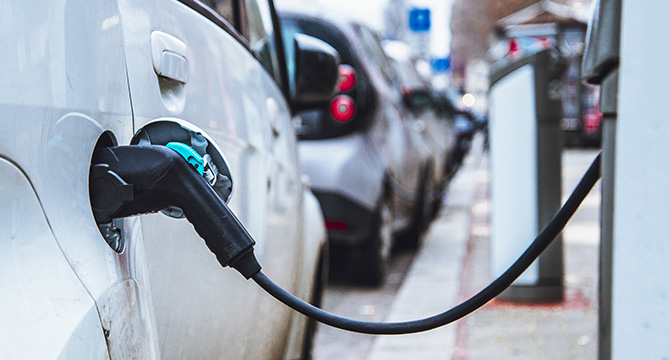Modernizing Our Grid Infrastructure and Business Models to Meet Increasing Electric Vehicle Demand

Guest Author: Jim Saber, President & CEO – NextEnergy
If you follow the developing electric mobility industry, you will find articles and announcements on new concept and production vehicles, battery technologies to improve vehicle range, electric vehicle charging networks, mobility services, etc. on a daily basis. It is a race to bring to the market new vehicles and services which appeal to consumers and satisfy regulators and policy makers.
While the electric vehicle (EV) industry is in still in the early stages, it is primed for significant growth in the next five to seven years. Recent articles have predicted that EVs will be cheaper to purchase than internal combustion engine vehicles by 2025. With more EVs expected in the near future, more activity needs to occur in charging and infrastructure to ensure a seamless travel and user experience. Vehicle electrification can also reverse a decade-long trend of flat demand growth for electric utilities. However, the programs and business model development has been slow in this historically conservative industry. A recent Smart Electric Power Alliance report Utilities and Electric Vehicles: Evolving to Unlock Grid Value found that 74% of utilities were in the early stage of EV programs, 23% were in the intermediate stage, and 3% were in late stages; each stage was determined based on level of consumer engagement, as well as availability of incentives and rate programs.
In 2017, 43 state governments and the District of Columbia worked on 227 pieces of legislation that included the regulation of EVs, study or investigation of EVs, incentive programs, charging infrastructure, and new utility rates for EV charging.
In Q3 2018 alone, a total of 276 grid modernization actions were taken, representing a 50% increase over Q3 2017.
Clearly, states and utilities are working to accelerate their programs. Leader states can help lagging states and their associated utilities by determining the best way to spend their time and money, but models of success have been, and are being developed so replication at scale can happen now.
As states and utilities are increasing their activity to support the growth of EVs, a few areas of future focus are:
- Future ownership and operation of the charging stations. States are developing programs and positions on utility ownership and operation of EV charging stations. Utilities are most familiar with the local electrical grid and have the expertise to operate the stations in a manner which increase stability and efficiency of the systems which can be an advantage. Utility ownership and operation may also limit retail competition and negatively impact EV owners in the future.
- The sale of electricity via EV charging stations. Since the EV charging station is not a generator (similar to a solar panel), many states are piloting the ability for the station operator to sell the electricity that goes to the charge the vehicle. This can lead to increased revenue for the operator and if taxed properly, a source of funding for the state to replace fuel taxes. Some have concerns over the potential for significant fluctuation in pricing.
- Experimental rates for DC fast charging systems which minimize demand charges. Owners of DC fast charging stations are typically billed on a utility’s general service tariff with a three-part rate, including per-kWh energy charges, a demand charge, and a fixed charge. The fast charging nature of these stations results in high demand charges on owners’ bills, which can be a deterrent to developing this infrastructure. To overcome this obstacle and encourage the build-out of DC fast chargers, several utilities are proposing demand charge alternatives for the owners of fast charging stations.
As states and utilities go from early to late stages of the policies and programs to support electric vehicles, the opportunities for business to invest and participate in new added-value services will become clearer, and the value of electrified mobility will be more easily realized by consumers.
Guest Author: Jim Saber, President & CEO – NextEnergy Center. NextEnergy is a non-profit corporation based in Detroit, Michigan that works with innovators to accelerate smarter, cleaner, more accessible solutions for communities and cities.